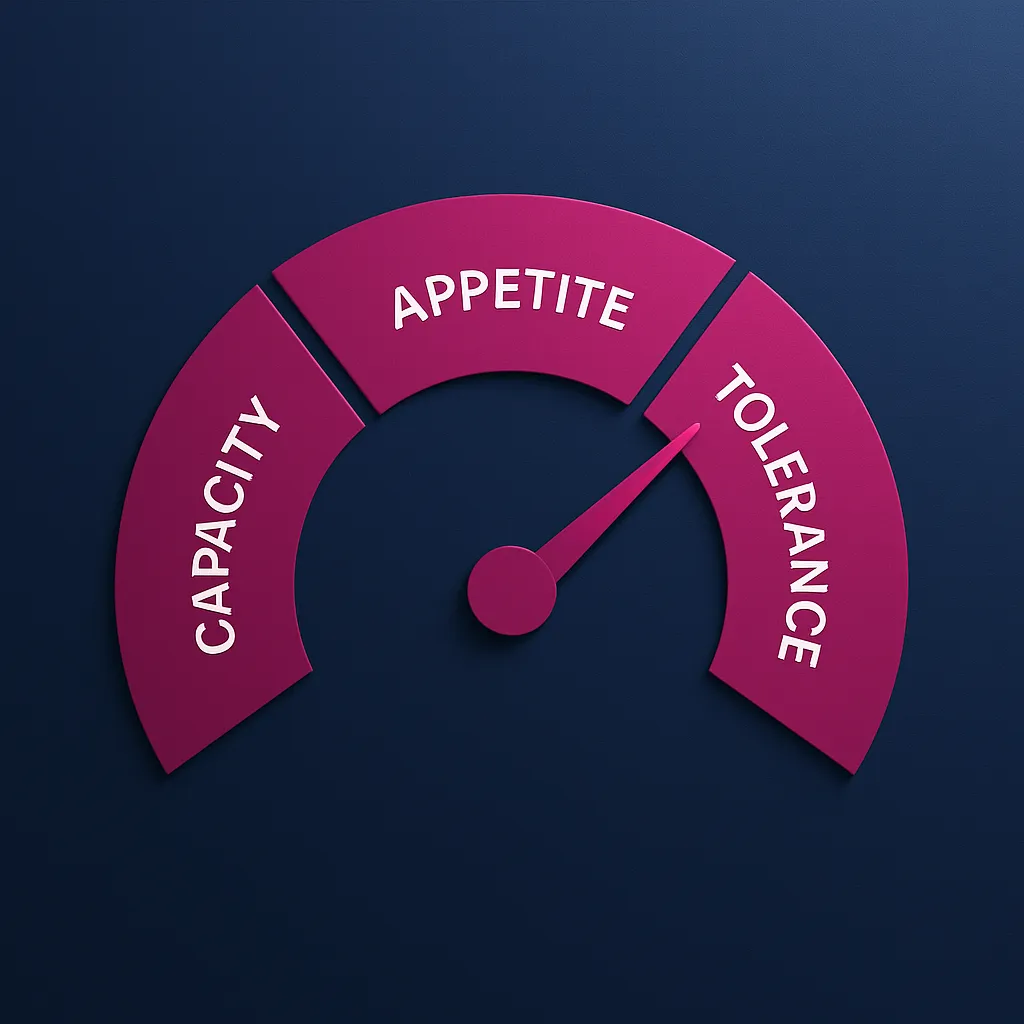Why Risk Management Is Now a C-Suite Imperative
It’s 2 a.m. and your phone buzzes: “Our data center is down.” You log in. The screens stay dark. Every quiet minute costs sales, frustrates customers, and drains team morale. By dawn, you’re on a crisis call with the board, scrambling to explain what went wrong. This isn’t just an IT hiccup. It’s a leadership awakening.
The New Risk Landscape
Risk is no longer confined to annual audits or compliance checklists. It moves at digital speed, ripples across global supply chains, and often arrives without warning:
- Velocity and Interconnectedness: A cyberattack today can cascade into production delays tomorrow - interlinked threats demand a holistic view.
- Expanding Frontiers: Beyond IT, risks now include climate volatility, geopolitical shifts, and third-party failures.
- Unpredictable Triggers: New regulations or social movements can upend strategies overnight, so static risk registers fall short.
Waiting for quarterly reviews means missing the moment when a hidden threat goes public. Modern risk requires continuous scanning, cross-functional collaboration, and scenario planning to anticipate “unknown unknowns.”
The Imperative for Executive Leadership
When the C-suite owns risk management, it transforms from a reactive cost center into a proactive strategic advantage:
- Strategic Alignment: Embed risk benchmarks in your business objectives. Projects with unacceptable risk profiles get paused before resources are wasted.
- Resource Prioritization: Direct budgets and talent to the highest-impact risks, rather than spreading efforts thin across low-probability scenarios.
- Organizational Culture: An explicit tone-from-the-top cultivates a risk-aware mindset across teams - employees flag issues early when they know leadership is listening.
- Continuous Monitoring: Real-time dashboards and leading indicators (e.g., supply-chain velocity metrics or threat-intelligence feeds) replace stale heat maps.
- Investor and Customer Confidence: Stakeholders reward transparency. Proactive disclosures of risk posture can bolster stock performance and customer loyalty, even before a crisis hits.
A Real-World Turnaround
In March 2011, the Tōhoku earthquake shattered Toyota’s just-in-time parts network - spurring a Business Continuity Plan with multi-tier supplier mapping, buffer inventories and first-hour response protocols. They learned their lesson:
- Mandated 2–6 months of chip reserves for tier-1 and tier-2 suppliers
- Rolled out live, multi-tier risk dashboards
- Activated hour-zero alternate-part assessments
Fast forward to 2021 - fire at Renesas’s chip plant and a COVID-driven demand spike ignited a global shortage. While peers slashed output by up to 40%, Toyota hit its production targets and raised profit guidance 54%, sidestepping major shutdowns.
Your First Step
Map Your Top Three Risks
- On one page, list the three risks with the highest potential impact (e.g., cyber breach, supply-chain disruption, regulatory change).
- For each, estimate tomorrow’s worst-case outcome: lost revenue, fines, reputational harm.
- Define your “first-hour” response: who acts, what data they need, and how decisions escalate.
By naming and planning for your top risks, you shift from reactive firefighting to strategic foresight - setting the stage for a resilient, opportunity-driven organization.
The Evolution of Risk Management: From Compliance to Strategic Advantage
A decade ago, risk management meant filling out forms and checking boxes. Today, it’s a vital competitive differentiator.
From Checklist to Strategy
Early risk functions focused on compliance - Sarbanes-Oxley attestations, regulatory filings, audit afterthoughts. Teams operated in silos, driven by tick-the-box exercises and quarterly reporting. Risk lived in spreadsheets, buried under layers of process, with little connection to business outcomes. As regulations multiplied and stakeholder scrutiny grew, leaders realized that compliance alone couldn’t protect the organization - or unlock value.
Key Phases of Evolution
Risk management has matured through four overlapping stages:
- Compliance Era (1990s–2005): Focus on legal and regulatory mandates, driven by finance and audit teams.
- Operational Risk Expansion (2005–2012): Broader view to include process failures, supply-chain disruptions, and IT outages.
- Enterprise Risk Management (2012–2018): Integration across functions, tied to strategy and governance, with board-level oversight.
- Real-Time Risk Intelligence (2018–Today): Data-driven, continuous monitoring using analytics, threat intelligence feeds, and predictive indicators.
Each stage built on the last, shifting risk from a back-office requirement to a boardroom priority and, now, to a dynamic capability that supports faster, smarter decisions.
Modern Risk Management: Intelligence and Agility
Today’s leading organizations blend technology and process to stay ahead of emerging threats:
- Integrated Dashboards: Consolidate KPIs, incident reports, and third-party metrics into live views.
- Predictive Analytics: Use machine learning to flag unusual patterns - like supplier slowdowns or cyber-threat spikes - before they escalate.
- Cross-Functional War Rooms: Bring operations, IT, legal, and finance together for rapid scenario planning and response drills.
This intelligence-and-agility model transforms risk from a brake on growth into a competitive edge, enabling you to seize opportunities while others scramble.
When Nissan launched its 2016 IoT- and ML-driven predictive-maintenance program - using vibration and temperature sensors - unplanned downtime fell by up to 50% in the first year, emergency repair costs dropped 30%, and new-model launch cycles accelerated by 40%.
Reflect on Past Risk Events
To embed this evolution in your organization, start by learning from experience:
- List three significant risk events from your company or industry over the last five years.
- Identify common triggers, impacts, and where your response fell short.
- Note any early warning signs you missed - and outline how you would detect them next time.
By uncovering patterns in past events, you’ll spot hidden vulnerabilities and build the foundation for true risk intelligence - moving beyond compliance to strategic advantage.
Risk Management Maturity: Where Does Your Organization Stand?
You’ve rolled out a new risk platform, only to see just a handful of users logged in. Elsewhere, teams juggle spreadsheets, email threads, and ad-hoc meetings. Everyone’s busy with risk - but no one shares the same view. That gap can lead to blind spots, wasted resources, and missed threats.
The Five Levels of Maturity
Initial (Ad Hoc)
- Practices: Risk is addressed case by case, often in crisis mode. No formal documentation or repeatable process.
- Pitfalls: Inconsistent responses, high reliance on individual knowledge, frequent firefighting.
Repeatable (Basic Processes)
- Practices: Standard procedures exist (e.g., incident logs, basic risk registers), but application varies across teams.
- Pitfalls: Fragmented data, duplication of effort, difficulty consolidating insights for executives.
Defined (Integrated Framework)
- Practices: A formal risk framework (e.g., ISO 31000 or COSO ERM) guides all functions. Roles and responsibilities are clear.
- Benefits: Unified terminology, regular reporting cycles, proactive identification of interdependencies.
Managed (Data-Driven)
- Practices: Real-time metrics, dashboards, and key risk indicators inform decision-making. Automated alerts flag anomalies.
- Benefits: Faster response times, quantifiable KPIs, stronger linkage between risk and performance.
Optimizing (Continuous Improvement)
- Practices: Post-incident reviews feed a cycle of refinement. Advanced analytics and predictive modeling anticipate emerging threats.
- Benefits: Culture of learning, continuous enhancement of controls, first-mover advantage in risk mitigation.
Why Maturity Matters
- Consistency: A shared framework ensures that every team assesses and responds to risk the same way, reducing miscommunication.
- Visibility: Live data and KPIs surface hidden issues before they escalate into crises.
- Efficiency: Streamlined processes free up resources for strategic initiatives rather than manual reporting.
- Momentum: Each maturity milestone builds confidence and buy-in, accelerating the shift from compliance to value creation.
Assess Your Current State
- Form a Cross-Functional Team: Include stakeholders from IT, operations, finance, legal, and any other key functions.
- Use a Self-Assessment Tool: Rate your organization against the five maturity levels for process, technology, and culture.
- Plot Your Scores: Visualize strengths and gaps on a simple chart or heat map.
- Prioritize Next Steps: Focus on the lowest-scoring domains - these offer the greatest leverage for improvement.
When a leading global insurer decided to overhaul its enterprise-risk framework and crisis protocols, it eliminated 50+ resilience backlog cases in the first quarter and halved its annual review cycle from eight months to four months within a year.
The Cost of Inaction: Real-World Consequences of Poor Risk Management
In 2017, Equifax’s data breach unleashed a $4 billion goodwill write-down and eroded consumer trust that took years to rebuild.
Visible Financial Damages
- Regulatory fines and penalties: Under GDPR, violations can trigger fines up to €20 million or 4% of global turnover. In the U.S., repeated SOX or SEC breaches have led to sanctions exceeding $100 million per incident.
- Remediation and recovery expenses: Beyond fines, the true cleanup often involves forensic teams, extended legal battles, customer-notification campaigns, and full system rebuilds - each adding tens of millions to the tab.
- Lost revenue and opportunity cost: Boeing’s 737 MAX grounding cost over $20 billion in deferred orders. For consumer platforms, each hour offline can translate to seven-figure revenue losses and diminished market share.
The Silent Tax on Innovation
When risk isn’t managed, organizations impose an “innovation tax” on themselves:
- Overly cautious culture: Teams bypass bold initiatives for the comfort of “safe bets,” delaying or killing potentially game-changing projects.
- Budget drag: Funds meant for R&D or growth funnel into reactive patches and stop-gap measures.
- Strategic paralysis: Leadership meetings become dominated by “what if” scenarios, leaving little room for growth-oriented agenda items.
The Productivity Drain: Risk Debt
Unaddressed risks accumulate like technical debt - we call this risk debt:
- Deferred Mitigation: Each postponed control or audit adds incremental exposure.
- Compounding Interest: Small losses from near-miss events quietly erode margins, often unnoticed until they coalesce into a major crisis.
- Backlog Overload: When it’s finally time to address the backlog, resource constraints make comprehensive remediation nearly impossible, perpetuating the cycle.
Cultural Fallout and Talent Flight
- Risk fatigue: Constant firefighting leads to burnout. Teams stop reporting “small” issues, creating blind spots until something blows up.
- Moral hazard: Without clear accountability, individuals may take extreme shortcuts, assuming leadership will bail them out of any fallout.
- Talent attrition: High performers leave for environments where calculated risk is encouraged, draining the organization of institutional knowledge and hampering future resilience.
A recent survey found that 85% of executives believe their organization is resilient, yet only 15% have stress-tested major risk scenarios - revealing a dangerous overconfidence.
Deep-Dive Action: Quantify Your Risk Debt
Before your next executive workshop:
- Select one priority risk from your top three.
- Audit deferred controls: List mitigation steps postponed in the last 12 months.
- Estimate micro-losses: Sum the small incidents, near misses, and patch-work fixes - and assign dollar values.
- Project the debt impact: Model how those cumulative losses would escalate if unchecked over the next year.
By exposing your risk debt in clear financial terms, you’ll make a compelling case for proactive investment - converting hidden liabilities into targeted, value-driving initiatives.
Wrapping Up
We’ve walked through why risk management needs to live at the top, how the practice has evolved, where your organization might sit on the maturity curve, and what happens when you let risk go unchecked. Now, let’s turn all of that insight into action.
Next Steps Recap
- Map Your Top Three Risks List the three threats that keep you up at night, estimate each worst-case impact for tomorrow, and sketch your first-hour response.
- Look Back to Move Forward Recall three significant risk incidents from the last five years, note their triggers and fallout, and identify one early warning you’d catch next time.
- Uncover Your Risk Debt Choose one priority risk, audit deferred controls, tally small failures and near-misses in dollars, and model how those micro-losses could snowball over the next year.
By doing this homework, you’ll shift from reacting to leading - turning hidden liabilities into targeted, high-value initiatives.
Sneak Preview
In our next conversation, we’ll dive into defining your risk management philosophy. We’ll start by clearing up the confusion between risk appetite and risk tolerance, then show you how to align risk management with your corporate values and strategy. From there, we’ll explore how to create a risk-aware culture without creating fear and uncover the keys to executive sponsorship for risk success.
Can’t wait to dive into this together!

